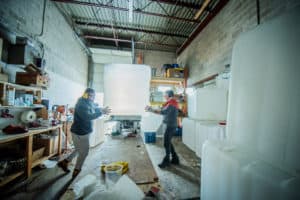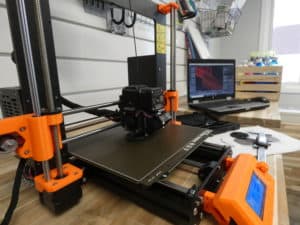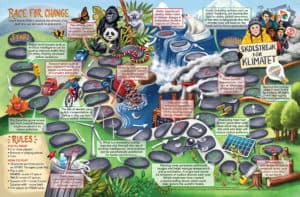In the debut issue of Root & STEM, we look at how technology and tradition are being combined in the fight against climate change. Learn about hunters collaborating with data scientists, teens in Tuktoyaktyuk telling their own story on film, and more—including over 10 pages of free learning resources.
Letter from the Publisher
What we talk about when we talk about tech
Welcome to the first edition of Root & STEM, a resource for educators in rural and remote communities who want to bring educational opportunities in Science, Technology, Engineering, Arts and Math (STEAM) to their students. Root & STEM merges heart and head, while pushing the boundaries of how Canada thinks about STEAM. Our goal is to provide a platform for more diverse STEAM stories, lesson plans and shared resources. Our hope is that educators will see the unique needs of their communities and classrooms reflected in the stories we tell.
The irony of reading about innovation in Canada on printed paper is not lost on us, but it speaks to the reality of why a resource like this needs to exist. In the rush to promote and encourage education in “21st-century skills” in Canada, much of the country is being left out. As schools in major cities debate the ethics of embracing Google Classroom and the productivity risks of allowing cell phones in class, Canadians in rural and remote communities are still waiting for working cell service and Internet access that functions consistently enough to allow for online learning. Meanwhile, the realities of a changing climate reach them first, bringing new challenges.
Founded in Nunavut with the goal of bringing technology and technological opportunities to rural and remote communities, the Pinnguaq Association develops and promotes coding education, and publishes resources to try to level the playing field between urban and rural communities when it comes to accessing technology. Sometimes this means we bring resources to people in a way that doesn’t rely solely on digital tech. When your Internet can be taken out for hours by the position of the sun in the sky, a magazine can keep the conversation going.
The conversation we’re all having now is about the climate crisis. Technology helped get us into this mess; can it also get us out? In some communities, the answer hinges on combining digital skills with traditional knowledge and the voices of the communities most affected—recognizing that the experiences of those who live on the land are equally as valuable as the data we collect about it.
Too often, solutions for problems in northern or rural communities are developed in urban centres, framed by people who don’t always understand the balance required among land, people and technology. This is not, then, a conversation about what technology can bring to rural and remote communities: at Root & STEM, we want to change the thinking on how innovation flows. Let’s talk about what ideas and innovations our communities can bring to the rest of the world.
The stories and lesson plans contained in this first issue of Root & STEM engage with people in our communities who are working on ways to address a wide range of climate-related challenges, from unstable sea ice, to degraded watersheds, to the very way in which we understand the meaning of “technology.” This issue showcases SmartICE and SIKU, two tech-based projects running in Arctic communities, which embrace the spirit of Qanuqtuurniq—being innovative and resourceful. Our lesson plans were designed by Aqqiumavvik, the Arviat Wellness Society in Arviat, Nunavut, and are focused on Inuit Qaujimajatuqangit. In making these teachings available here, we hope to show that the solutions we need have been there all along. We just need to listen to the people who know them.
– Ryan Oliver
Featured Content
Below is a collection of stories, activities, comics, and lesson plans featured in the first issue of Root & STEM.














